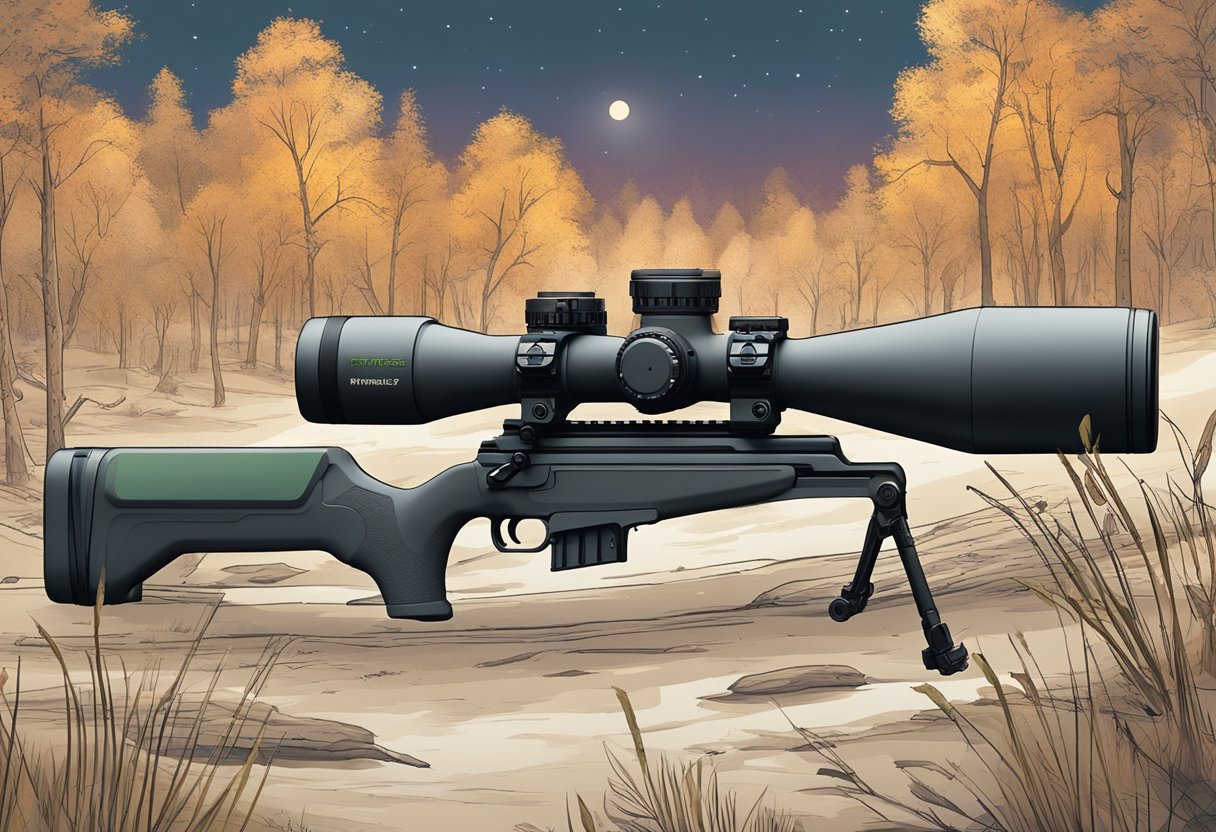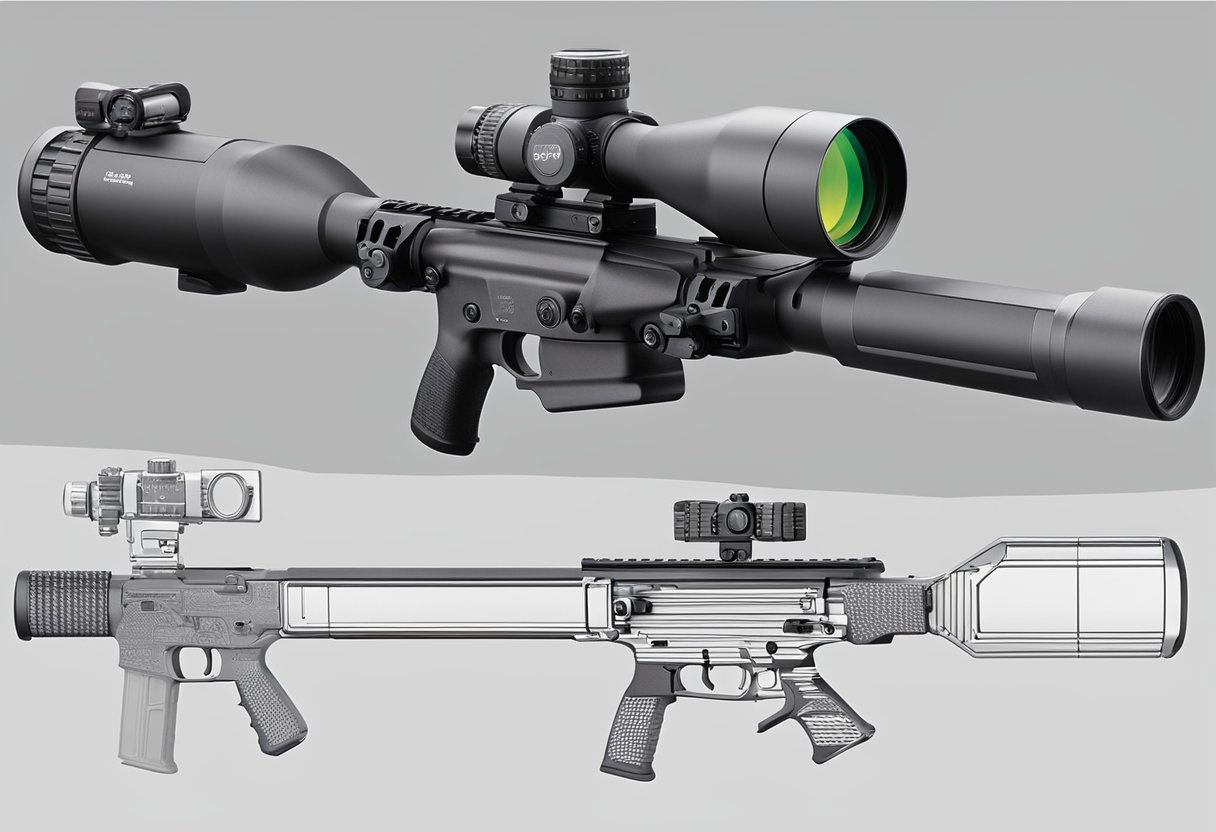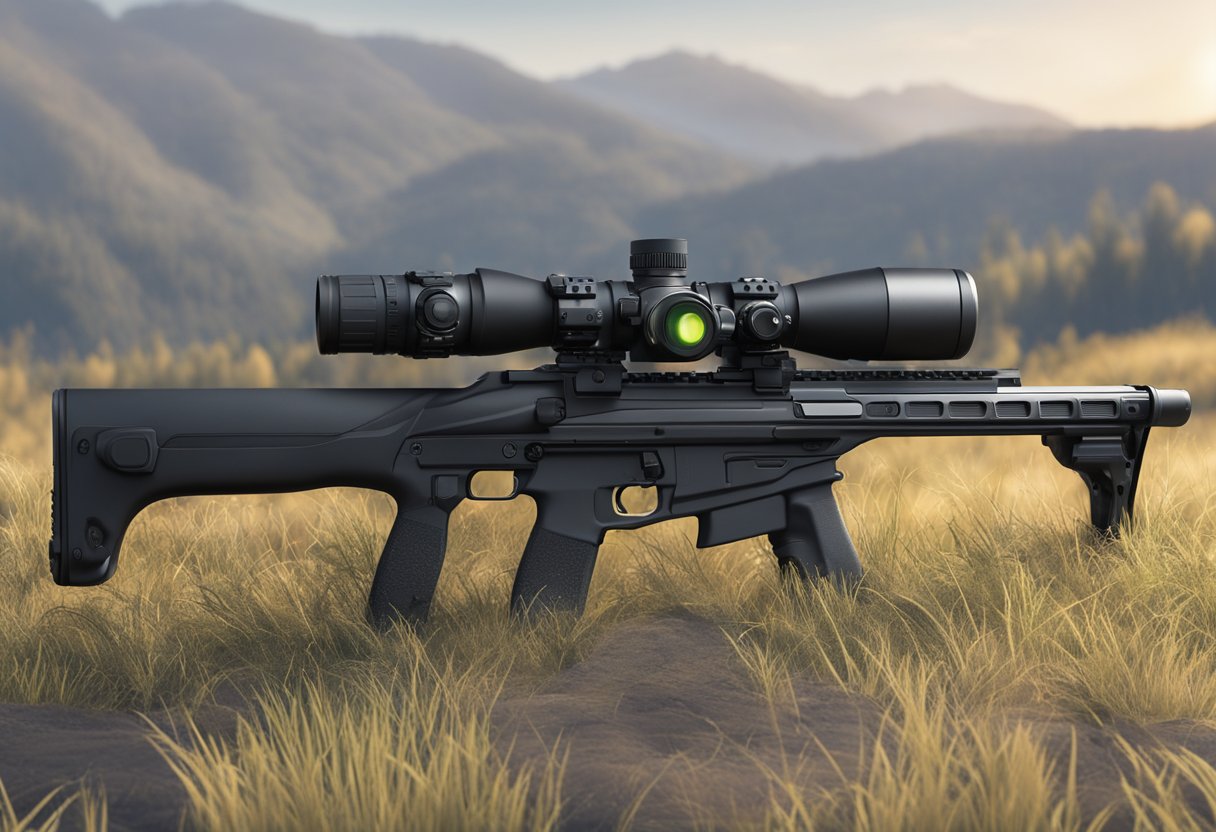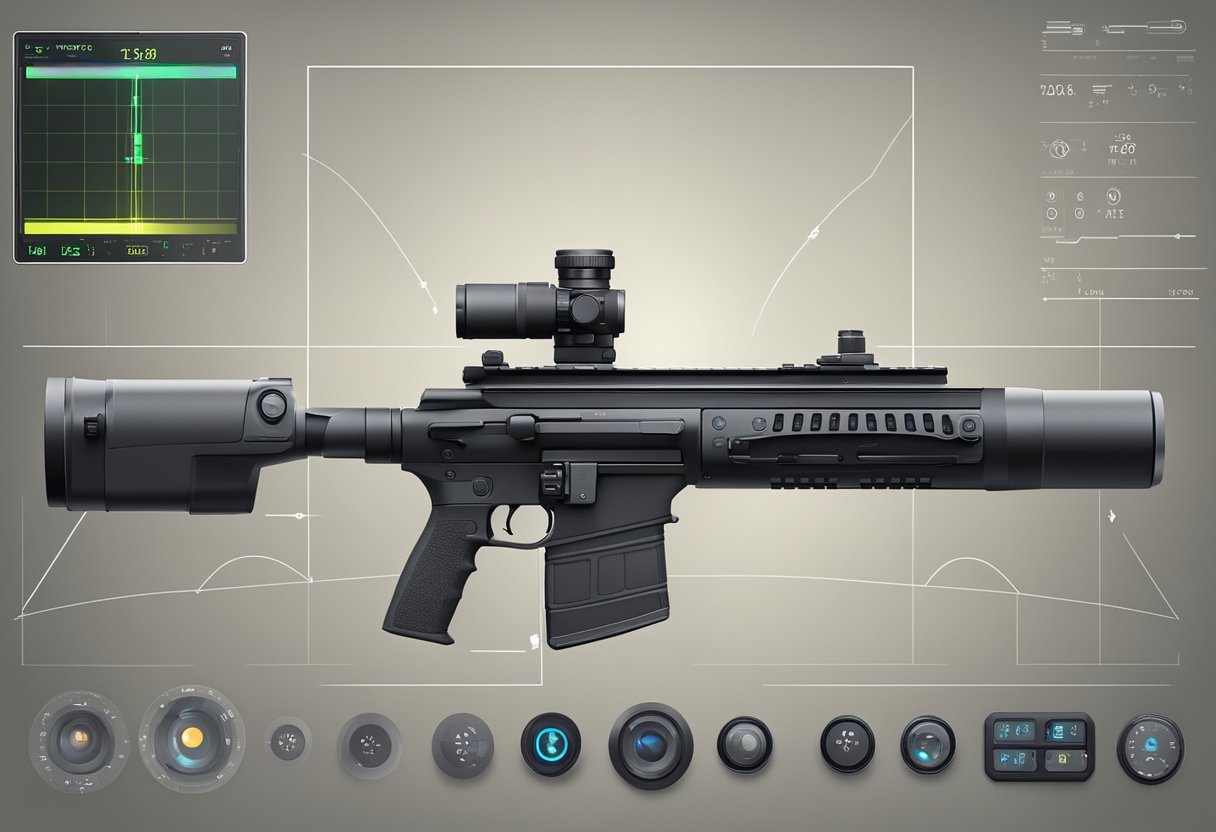What is a Hybrid Thermal Scope: An Overview of Features and Benefits

A hybrid thermal scope combines the features of a thermal clip-on and a thermal weapon sight, providing users with exceptional versatility in their shooting and observation activities. It can detect heat signatures over long distances, making it useful for nighttime hunting and tactical operations. These scopes are equipped with both thermal imaging technology and traditional day optics, allowing seamless transitions between different lighting conditions.
Hybrid thermal scopes are designed to offer high performance and adaptability. They can be used as dedicated thermal sights with impressive detection ranges, or attached to existing day optics to enhance their capabilities. This dual functionality is made possible by advanced components like large-format displays and low-distortion eyepieces, providing clear and comfortable views in various scenarios.
The RICO HYBRID series, for example, stands out for its ability to detect targets up to 3,600 yards away as a thermal sight and its compatibility with day optics up to 10x magnification as a clip-on device. Such features make hybrid thermal scopes valuable tools for hunters, tactical professionals, and anyone needing reliable thermal imaging technology.
Understanding Hybrid Thermal Scopes

Hybrid thermal scopes combine traditional optical sights with modern thermal imaging technology. These devices offer enhanced target detection and identification capabilities, making them ideal for various shooting scenarios.
The Basics of Thermal Imaging Technology
Thermal imaging technology detects heat emitted by objects and forms an image based on temperature variations. Thermal sensors measure infrared radiation, converting it to an electronic signal. The signal is then displayed as an image, showing hotter objects as brighter and cooler objects as darker.
Resolution and thermal sensitivity are crucial for image clarity and target recognition. Higher resolution provides more detailed images, while better thermal sensitivity allows the device to detect smaller temperature differences. These features improve the ability to spot and identify targets, even in complete darkness.
Key Features of Hybrid Thermal Scopes
Hybrid thermal scopes include a combination of a traditional red dot or optical sight with thermal imaging. This dual functionality offers the benefits of both sight types. Users can switch between thermal and optical modes as needed. Common features include variable magnification, allowing users to zoom in on targets. Pixel density impacts image clarity; higher density results in more detailed thermal images. Sensor type and technology also play a role, with advanced sensors providing better performance. These scopes often include built-in rangefinders, video recording, and Wi-Fi connectivity. Such features enhance user experience and provide additional functionalities for various applications.
Design and Build Quality

Hybrid thermal scopes combine multiple functionalities into one device, so their design and build quality are critical for ensuring performance and reliability. These scopes are designed to be both durable and easy to use.
Material and Durability
Hybrid thermal scopes are often made from magnesium alloy, a material known for its durability and lightweight properties. This blend ensures that the scope can withstand harsh conditions without adding excessive weight to the equipment. Ingress protection ratings are also crucial, as they indicate resistance to dust and water. High-quality scopes often have ratings like IP67, meaning they are dust-tight and can be submerged in water up to a certain depth. The housing material is frequently reinforced to protect the internal electronics from shocks and impacts, further enhancing the scope’s lifespan.
Ergonomics and User Experience
The weight, length, height, and width of hybrid thermal scopes are carefully designed to offer a balanced feel. These scopes should be easy to mount and dismount from various firearms. User-friendly interfaces with intuitive controls are essential, allowing for quick adjustments even in low-light conditions. Button placements and menu systems are designed to be accessible, reducing the learning curve. Many scopes also feature rubberized grips and adjustable eyepieces to enhance comfort and ensure a steady aim. Enhanced ergonomics make these devices more appealing to both novice and experienced users.
Optical Performance

Hybrid thermal scopes offer unparalleled versatility, combining thermal imaging with optical precision. Key aspects include image resolution, magnification capabilities, and field of view, which all contribute to superior performance.
Image Resolution and Display Quality
The image resolution in hybrid thermal scopes typically ranges from standard to high-definition formats. High-resolution thermal imaging sensors help in detecting small details, even in low light conditions. Displays with higher resolutions provide clearer and more detailed images. Display resolution impacts how crisply these details are presented to the user. State-of-the-art hybrid scopes often feature full-color OLED displays, enhancing visual clarity. An essential feature for many users is the manual focus, allowing adjustments to sharpen images based on the distance and size of the target. This combination of high-resolution sensors and displays ensures users can detect and engage targets effectively.
Magnification and Range
Magnification levels in hybrid thermal scopes usually vary from 1x to 12x or more. This allows users to engage targets at varying distances without losing image quality. Variable magnification helps in both close-range and long-distance scenarios. The optical magnification is complemented by digital zoom options, providing flexibility in target detection. Another aspect to consider is the detection range, which indicates how far the scope can detect a heat signature. Advanced models can detect targets over significant distances, sometimes exceeding 1500 meters, ensuring that users have ample time to identify and engage targets.
Field of View and Focus
The field of view (FOV) is critical for situational awareness. A broader FOV allows users to scan larger areas without moving the device. Hybrid scopes often provide a horizontal angular field of view ranging from 6 to 18 degrees, which is suitable for various applications. The low-distortion orthoscopic eyepiece helps maintain image integrity across the field of view. This ensures that the user sees a clear and undistorted image edge-to-edge. Additionally, manual focus adjustment lets users fine-tune the clarity, depending on the distance and size of the target. Precise focusing is essential for acquiring targets quickly and accurately, making it a critical feature for operational success.
Functional Features
Hybrid thermal scopes are packed with various features designed to enhance targeting and detection accuracy. They integrate different technologies, offer customization options, and provide various power and connectivity solutions.
Integrated Technologies
Hybrid thermal scopes often combine multiple technologies such as thermal imaging and digital optics. This integration delivers a versatile tool for both day and night use.
- Thermal Imaging: These scopes include advanced thermal sensors that detect heat signatures, offering capabilities to see targets in complete darkness.
- Digital Optics: Some models, like the Rico Hybrid, also integrate digital optics that allow users to switch between thermal and visible light modes.
- Onboard Ballistic Solver: Many hybrid scopes feature built-in ballistic calculators, assisting with accurate long-range shots.
Customization and Accessories
Customization is a key feature of hybrid thermal scopes, offering flexibility to meet various user needs.
- Reticle Options: Hybrid scopes come with customizable reticles. The Custom Reticle Generator allows users to create specific reticle patterns based on their preferences.
- Ballistic Solver: Some models also feature an onboard ballistic solver, aiding in trajectory calculations for precision shooting.
- Accessories: Many hybrid thermal scopes support additional accessories like laser rangefinders and clip-on options for extended capabilities.
Power and Connectivity
Power and connectivity options in hybrid thermal scopes ensure continuous operation and data sharing capabilities.
- Power Source: These scopes typically use rechargeable batteries and can also support external power sources for extended missions.
- USB-C: Many models feature USB-C ports for quick recharging and data transfers.
- Bluetooth and WiFi: Connectivity options often include Bluetooth and WiFi, enabling easy connection to smartphones and other devices for real-time data sharing and updates.
User Interface and Control

A hybrid thermal scope offers a range of user-friendly features to enhance the shooting experience. These components include various display and visualization options and advanced software and firmware functions.
Display and Visualization Options
Hybrid thermal scopes come with high-resolution displays, often featuring large-format and full-color OLED screens with resolutions like 2560×1920 pixels. These displays provide crisp and clear visual output, essential for accurate targeting. They offer various color palettes for different viewing conditions. White Hot, Black Hot, Red Hot, Iron Red, and Rainbow are common options. Each color palette highlights heat signatures differently, allowing users to adjust based on their preferences and environmental conditions. Many models also include an orthoscopic eyepiece, which minimizes visual distortion for a more comfortable viewing experience. Additionally, some scopes feature reticle generators that support multiple reticle styles and ballistic calculations, further improving aiming accuracy.
Software and Firmware
Software and firmware in hybrid thermal scopes enhance functionality and allow for customizations. Most scopes come with user-updatable firmware, ensuring that users can benefit from the latest features and improvements over time. Many devices are compatible with mobile apps, enabling remote control and adjustments. These apps can offer live streaming, video recording, and image capturing capabilities, making it easier to document and analyze outings. Some models include advanced features like ballistic calculation and BDC reticles. These features assist in precision targeting by accounting for variables such as distance and wind. Overall, the integration of robust software and firmware functionalities ensures that a hybrid thermal scope remains a versatile and reliable tool for shooters.
Compatibility and Integration
Hybrid thermal scopes are highly versatile, designed to work seamlessly with existing systems and day optics. Below, the focus is on how these scopes integrate with various setups and the benefits of their clip-on functionality.
Mounting and Usage with Existing Systems
Hybrid thermal scopes often feature a Picatinny Mil-Std 1913 Rail mounting interface. This allows for easy attachment to a variety of firearms without the need for additional equipment. Users can quickly switch between day optics and thermal imaging, enhancing adaptability in different lighting conditions. They can be used as standalone weapon sights or clipped onto existing day optics. Compatibility with common mounting systems ensures that they fit a wide range of firearms, including rifles and tactical shotguns, making them a versatile addition to any arsenal.
Thermal Clip-On for Day Optics
One of the main advantages of hybrid thermal scopes is the ability to clip on to day optics. They provide the benefits of thermal imaging without replacing existing sights. This is achieved through advanced technology that works seamlessly with day optics up to 10× magnification. Clip-on functionality enhances target detection and identification, especially in low-light environments. This means shooters can maintain their preferred day optics while gaining the advantages of thermal imaging, which is particularly useful for hunting and tactical applications. Such integration maximizes utility and performance without compromising accuracy.
Operational Performance
Hybrid thermal scopes are engineered for precision and reliability. Key aspects like startup times and environmental adaptability play crucial roles in their performance.
Startup and Response Times
Hybrid thermal scopes typically deliver quick startup times. Most models are ready for use within a few seconds, ensuring rapid deployment in critical situations. The RICO HYBRID series, for instance, boasts an almost instant startup from standby mode, minimizing delay. Response times are also optimized for fast target detection, making these devices highly suitable for dynamic environments.
Environmental Adaptability
These scopes excel in a range of environmental conditions. Operating temperatures often span from -40°F to 122°F, extending usability across diverse climates. Recoil rating is also a significant consideration; many hybrid scopes are designed to withstand the heavy recoil of larger calibers. This ensures consistent performance, regardless of the terrain or weather conditions.
Reliability and Maintenance
Regular maintenance ensures the long-term operational reliability of hybrid thermal scopes. Battery life is crucial and commonly lasts several hours on a single charge. Units like the HYH75W model offer robust construction to withstand harsh field conditions. Maintenance routines generally involve simple cleaning and software updates, facilitating sustained peak performance.
Additional Specifications
Hybrid thermal scopes come with numerous advanced features that enhance user experience and safety. These specifications not only improve performance but also ensure reliable and safe use in various conditions.
Enhanced Capabilities
Hybrid thermal scopes offer impressive detection ranges, some reaching up to 3,600 yards. They also include advanced ballistic calculations and BDC reticles, improving accuracy. Most units feature a high refresh rate, such as the 90Hz found in the Hybrid HYL50W, providing smooth visual output. The large-format 2560×1920 display paired with a low-distortion orthoscopic eyepiece offers a clear, comfortable viewing experience. Many scopes are equipped with various color palettes like Red, Black, and White, offering users options like 7 Static modes for different environments. Diopter Range adjustments and eye relief distance customization cater to individual preferences.
Safety and Certification
Safety features include stand-by mode, ensuring the scope conserves battery when not actively used, extending the run time. Units often come with built-in rangefinders, helping users judge distances better and enhancing safety when aiming. Certification standards ensure thermal scopes meet stringent quality and safety benchmarks. Most come with a warranty, providing peace of mind and indicating the manufacturer's confidence in their product. These certification and warranty details are critical for users who require reliable performance in demanding conditions. The combination of these specifications makes hybrid thermal scopes highly efficient, safe, and adaptable, catering to a wide range of needs and preferences.
Manufacturer and Warranty Information
The RICO HYBRID thermal scopes are manufactured by iRay USA. iRay is known for its high-quality imaging solutions and innovative technology. Many of these scopes are made in China, where strict manufacturing standards ensure a reliable and durable product. Most RICO HYBRID models come with a standard warranty. This usually covers any defects in materials or workmanship for a certain period. Customers should check specific model details for exact warranty terms.
| Model | Manufacturer | Country of Manufacture | Warranty |
|---|---|---|---|
| HYH50W | iRay USA | China | Standard Warranty |
| HYL50W | iRay USA | China | Standard Warranty |
For purchases, many models will have a UPC (Universal Product Code) for easy identification. The UPC ensures that customers are getting genuine products from verified distributors. Buyers should always verify warranty terms and manufacturer information with the distributor to avoid any misunderstandings.




